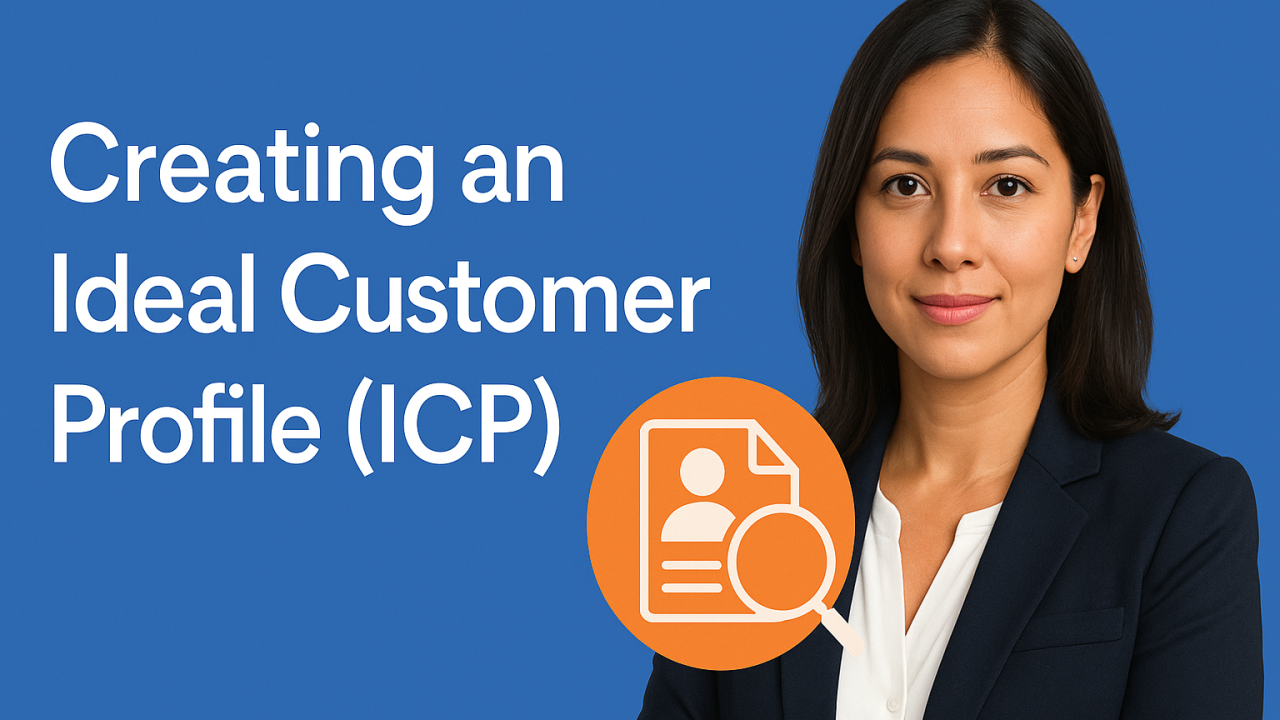If you’re developing an Account-Based Marketing (ABM) strategy for your small or mid-sized technology business, defining your Ideal Customer Profile (ICP) is not just a best practice—it’s essential. An ICP is the foundation of a focused and effective go-to-market strategy. It helps you identify and engage with the accounts most likely to convert, expand, and remain loyal over time.
Yet, many SMBs operate without one. They rely on broad targeting, generic messaging, and inconsistent prospecting tactics. The result? Wasted time, low conversion rates, and frustrated teams. By creating a clear and actionable ICP, you dramatically improve your ability to attract the right customers, align internal teams, and drive predictable growth.
What Is an Ideal Customer Profile?
An Ideal Customer Profile is a detailed description of the type of company (not individual buyers) that would benefit the most from your product or service—and deliver the highest value in return. While buyer personas focus on individual decision-makers within an account, the ICP is broader and more strategic.
Your ICP should include firmographic, technographic, and behavioral attributes, such as:
- Industry and vertical focus
- Company size (employees and/or revenue)
- Geographic location or region
- Technology stack or platforms in use
- Common business challenges or needs
- Buying triggers or indicators (e.g., funding, hiring, digital transformation initiatives)
- Growth potential and customer lifetime value
This profile enables you to prioritize accounts that align closely with your offering—and weed out those that don’t. It also provides a shared language for marketing, sales, and customer success teams.
Why an ICP is a Game Changer for SMBs
For SMBs with limited time, resources, and staff, targeting the right accounts is not optional – it’s critical.
Here’s why having a defined ICP is a game changer:
- Efficient Use of Resources: Focus your marketing and sales efforts on accounts that are most likely to close and grow.
- Improved Sales and Marketing Alignment: Everyone works from the same list of criteria, leading to more effective collaboration and fewer misfires.
- Higher Conversion Rates: Personalized outreach resonates better with high-fit accounts.
- Shorter Sales Cycles: When you speak directly to the needs of the right companies, they move faster through the funnel.
- Stronger Customer Retention: Customers who are a good fit are more likely to stick around—and expand.
Executive Alignment: ICP Impact Framework

How to Build Your ICP
Creating your Ideal Customer Profile involves a blend of quantitative analysis and qualitative insight. Here’s a step-by-step approach to get started:
1. Audit Your Best Customers
Look at your top-performing accounts. What do they have in common? Analyze:
- Industry
- Company size
- Location
- Product usage patterns
- Expansion or renewal history
These customers are the blueprint for your ICP.
2. Interview Internal Teams
Your sales, marketing, and customer success teams interact with prospects and customers every day. Ask them:
- What characteristics define an “easy” sale?
- What signals indicate a poor fit early in the process?
- What makes customers stay or churn?
These insights can surface blind spots that data alone might miss.
3. Use Data Enrichment Tools
Leverage tools like LinkedIn Sales Navigator, ZoomInfo, or Clearbit to gather firmographic and technographic data. This allows you to validate your assumptions and build a more complete profile.
4. Segment and Test
Once your ICP is defined, test it. Apply it to new campaigns, segment your outreach, and measure results. Are you seeing improved engagement and win rates? Refine based on performance.
Common ICP Pitfalls to Avoid
- Being Too Broad: “Mid-market tech companies” isn’t enough. Narrow your focus.
- Over-Relying on Job Titles: Remember, ICP is about companies, not people.
- Not Updating Your ICP: Market dynamics change. So should your ICP.
- Ignoring Post-Sale Fit: Some customers may buy but never grow. Long-term value matters.
Bringing Your ICP to Life
An ICP isn’t a static document—it should live in your CRM, marketing automation platform, and sales playbooks. Train your team on how to use it. Build it into your lead scoring and account selection processes. Use it to inform content creation, outbound messaging, and campaign targeting.
When done right, your ICP becomes a compass that guides everything from product positioning to pipeline prioritization.
Final Thoughts
In Account-Based Marketing, success starts with focus. And focus starts with your Ideal Customer Profile. For SMBs, it’s the difference between chasing leads and cultivating lasting customer relationships.
Start small. Stay focused. Refine as you grow.
Your best customers are out there—you just need to know how to find them.
#B2BMarketing #ABM #AccountBasedMarketing #SMBGrowth #IdealCustomerProfile #MarketingStrategy #SalesEnablement #CustomerSuccess #RevenueGrowth #GoToMarket #GoToMarketStrategy #MarketingLeadership #ExecutiveAlignment

